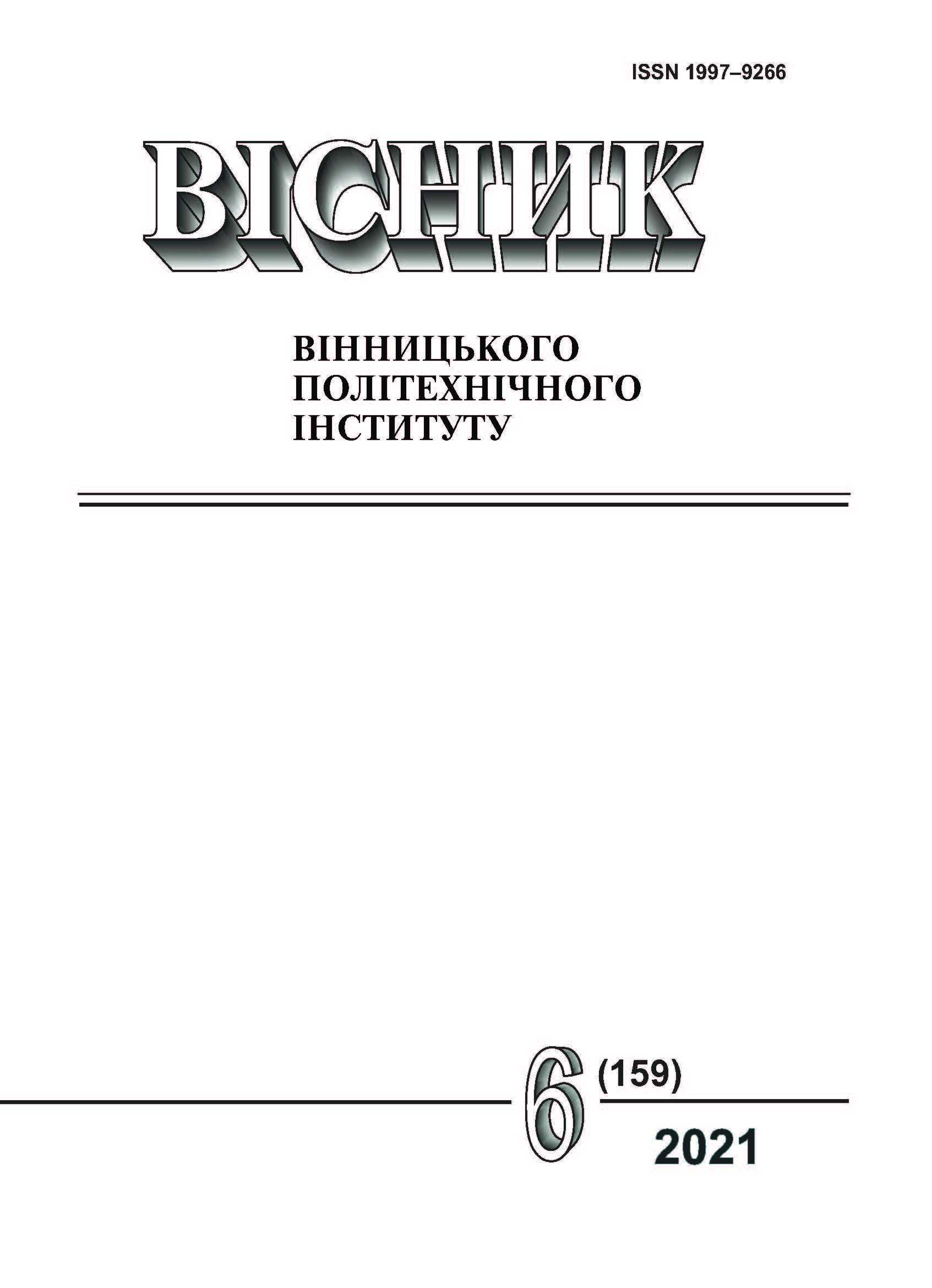The Structure of the Device for Identifying the Technical State of the Brush-Collector Node of the DC Traction Motor
DOI:
https://doi.org/10.31649/1997-9266-2021-159-6-38-43Keywords:
brush-collector knot, brush, collector, traction motor, DC motor, technical condition, identification, residual resource, intensity of spark, wearing brush, collector beatingAbstract
Most of the electric motors that work in manufacturing sphere have already exhausted their resource. The largest number of failures in the traction DC electric motor occur in the brush-collector node. The reasons for these failures are the poor quality of the switching adjustment, wear out of brushes and regular overload of the traction electric motor. Each failure is characterized by sparkling in transient contact with a brush-collector, which worsens the technical condition of the dark-collector node and energy performance of the traction motor in general and affects the resource of the latter. It had been identified that the prerequisite for reliable operation of the DC electric motor is the determination of the technical condition of its brush-collector node.
To increase the reliability of the DC traction electric motor there had been suggested the structure of the device to identify the technical condition of its brush-collector node. This structure takes into account a sufficient number of controlled parameters that allow to form diagnostic signs of a brush-collector node and determine the residual brush resource.
The synthesized device structure allows to: fix the presence and determine the intensity of sparking on the collector; fix the starting time and ending of sparks under the brush, the duration of spark pulses; determine the value of the average quadratic deviation of the duration of sparks by collector on its output and the value of the average quadratic deviation of the spark pulses in all collector plates that are sparkling, in time; determine the magnitude of wear out; brush wear out speed; residual brush resource; determine the collector's beating. When exceeding the permissible or threshold value of any of the parameters there had been envisaged the notification on the corresponding indicator and the alarm circle operation.
Identification of these parameters of the brush-collector node of the traction electric motor will determine the sources of increased spark, enabling to develop ways to improve the quality of switching by reducing the spark.
References
В. В. Харламов, Д. И. Попов, М. Ф. Байсадыков, и Д. В. Супоня, «Разработка методики предиктивного анализа ресурса щеток тяговых электродвигателей подвижного состава по условиям эксплуатации,» Известия Транссиба, № 1 (45), с. 2-11, 2021.
M. P. Rozvodiuk, “Monitoring of technical condition of the dc electric motor,” in Wissenschaft für den modernen Menschen: innovative technik und technologie, informatik sicherheitssysteme, verkehrsentwicklung, architektur: monografische Reihe «Europäische Wissenschaft». Karlsruhe, Germany: ScientificWorld-NetAkhatAV, Buch 4, Teil 4, 2021, pp. 29-38. https://doi.org/10.30890/2709-2313.2021-04-04-071 . ISBN 29 978-3-949059-12-4. [Electronic resource]. Available:
https://www.sworld.com.ua/simpge4/sge4-04.pdf .
В. М. Безрученко, і А. В. Шаповалов, «Аналітичне дослідження комутації тягових двигунів», Вісник Дніпропетровського національного університету залізничного транспорту ім. акад. В Лазаряна, вип. 32, с. 159-161, 2010. https://doi.org/10.15802/stp2010/13357 .
Н. В. Ивченков, «Математическое моделирование неисправностей щеточно-коллекторного узла машины постоянного тока,» Вісник КДПУ імені Михайла Остроградського, вип. 4/2009 (57), с. 160-163, 2009.
А. А. Осадченко, А. А. Цукублин, и О. Л. Рапопорт, «Мониторинг щеточно-коллекторного узла тягового электродвигателя при эксплуатации,» Известия Томского политехнического университета, т. 308, № 7, с. 107-109, 2005.
М. Байсадыков, «Разработка метода оценки интенсивности изнашивания и алгоритма прогнозирования остаточного ресурса щеток тяговых электродвигателей.» автореф. дис. канд. техн. наук за спец. 05.09.01, Электромеханика и электрические аппараты. Федеральное государственное бюджетное образовательное учреждение высшего образования «Омский государственный университет путей сообщения», Омск, 2020, 20 с.
П. К. Шкодун, и А. В. Долгова, «Применение аппарата нечеткой логики при диагностировании коллекторно-щеточного узла тяговых электрических двигателей подвижного состава,» Известия Транссиба, № 4 (28), с. 59-68, 2016.
В. В. Харламов, П. В. Шкодун, А. С. Хлопцов, и А. В. Долгова, «Формирование граф-модели диагностирования коллекторно-щеточного узла тягового электродвигателя с учетом тепловых факторов,» Известия Томского политехнического университета, т. 337, №1, с. 88-95, 2016.
М. П. Розводюк, і К. М. Розводюк, «Діагностування щітково-колекторного вузла електричного двигуна постійного струму,» International periodic scientific journal «Modern engineering and innovative technologies», is. 11, part 3, pp. 32-39, March 2020. Karlsruhe, Germany: Sergeieva&Co. https://doi.org/10.30890/2567-5273.2020-11-01-043.
О. С. Качин, А. С. Каракулов, и А. Б. Серов, «Анализ факторов, влияющих на интенсивность изнашивания щеток электрических машин и пути увеличения их строка службы,» Электротехника. Электротехнология. Энергетика: в 3 ч., сб. науч. тр. VII Международной научной конференции молодых ученых. Ч. 1. Секция «Электротехника», Новосибирск, РФ: изд-во НГТУ, 2015, с. 34-40.
В. В. Харламов, Д. И. Попов, и А. И. Стретенцев, «Разработка цифрового прибора контроля коммутации тяговых электродвигателей подвижного состава,» Известия Транссиба, № 2 (30), с. 54-64, 2017.
В. В. Харламов, Д. И. Попов, и М. Ф. Байсадыков, «Алгоритм прогнозирования ресурса работы электрических щеток тяговых электродвигателей,» Известия Транссиба, №1 (29), с. 47-56, 2017.
Downloads
-
PDF (Українська)
Downloads: 128
Published
How to Cite
Issue
Section
License

This work is licensed under a Creative Commons Attribution 4.0 International License.
Authors who publish with this journal agree to the following terms:
- Authors retain copyright and grant the journal right of first publication.
- Authors are able to enter into separate, additional contractual arrangements for the non-exclusive distribution of the journal's published version of the work (e.g., post it to an institutional repository or publish it in a book), with an acknowledgment of its initial publication in this journal.
- Authors are permitted and encouraged to post their work online (e.g., in institutional repositories or on their website) prior to and during the submission process, as it can lead to productive exchanges, as well as earlier and greater citation of published work (See The Effect of Open Access).





